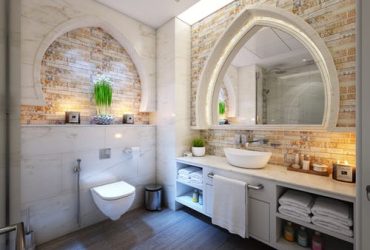How to Prepare Your Garden Before Installing Artificial Grass?
You’ve finally decided to put artificial grass on your lawn, and the next thing to do is prepare your garden before the products arrive. There’s a lot of preparation involved, especially if this is your first time, but you can finish it in no time if you know what you’re doing. Firstly, prepare the tools you need, including turf cutter (bigger garden), spade, flat shovel, wheelbarrow, rake, hose, compactor or hammer, and broom.
Your sub-base is an important part of your artificial grass since this will affect the finish and how long your lawn lasts. The most popular sub-base is crushed granite stone, also known as Grano dust or 4-6mm dust. It doesn’t absorb so much water and is better for drainage. Another is the MOT type 1, which is ideal for areas with a depth of over 50mm to fill or raise.
If you haven’t purchased your fake grass yet, ask the people you know for recommendations. It’s essential to buy from reliable suppliers, like these London artificial grass suppliers, to ensure the quality of your products. So, how do you prep your garden for your new artificial grass?
1. Remove Old Grass from Your Garden
Eliminate the natural grass in your garden if you currently have them since some weeds and plants can grow through it. Depending on your lawn’s size, a spade can do the job, but a turf cutter makes it easier if you have a bigger garden. Also, dig the soil up to 40mm to 50mm to allow the height of your new synthetic lawn.
Use your wheelbarrow to collect the old grass, saving time.
2. Clear the Area
If you won’t do the installation, it would be easier for the installers if you clip back any overgrown bushes. Also, clear the area by removing any long shards of natural grass left behind. Get rid of other objects, such as rubbish, toys, rocks, etc., and appropriately store away any plants and flower pots.
For those doing a DIY fake grass installation, look for suppliers who provide installation materials and advice. Take time in choosing your suppliers since not all offer quality fake grass products and customer service. Ensure to visit their website to check their products, click their “contact us today page,” and see how they communicate with their clients.
3. Insert Your Timber Edging and Add Your First Base Layer
Timber edging is extremely important to secure your artificial lawn. Insert it and add your first base layer. Use 19mm x 38mm (2″ x 1″) for standard perimeter edges for flower bed edged, it’s always best to utilize 19mm x 97mm (4″ x 1″). After you complete this, add a type 1 crushed limestone base to help with drainage and form a firm base.
4. Lay Your Sharp Sand
Lay out a batch of sharp sand, which acts as the base for your artificial grass. To ensure compact and smoothness, use a heavy hammer, builder’s plank, or any compactor to level the sand. Remember that the synthetic grass will lay better on a smoother surface.
5. Add a Protective Layer
Protect your new artificial grass from any weeds or other plants that may grow up beneath it. Add a protective layer of your sub-base to avoid plants growing up through the new fake grass and damaging it. After this, your new synthetic grass is ready for installation.
If you’re on a budget, find suppliers that offer products at different price ranges. If they have a “check our inventory” option, check it out and choose one that meets your needs.





